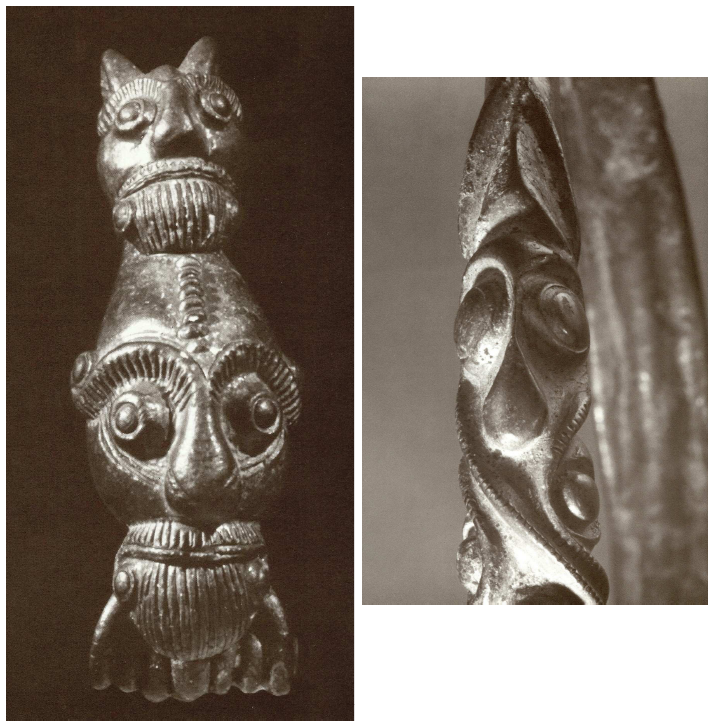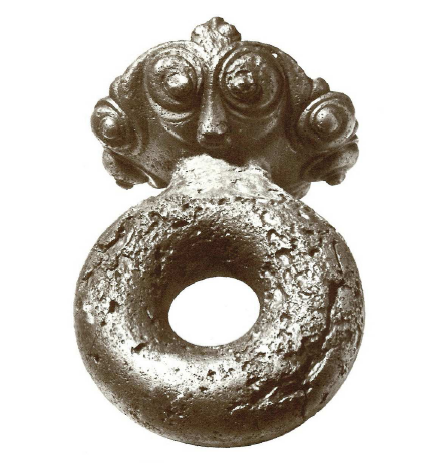I) Definition of ‘Sacred Intoxication’
A) The Opening to the Divine World
1) Intoxication and Trance: making contact with the divine world
As we have seen, ‘intoxication’ has to be understood in the broad sense of the word, which is to say the state reached, such as drunkenness, delirium or ecstasy, after consuming specific preparations or beverages made from vegetal or animal products altering the senses. In ancient times for instance, mandrake, bryone, datura, atropa belladonna, aconite, drosera, hemp, poppy and achillea were all renowned and used in the ‘rites of intoxication’ for their visionary and hypnotic virtues.2211 Intoxication allowed human beings to establish a connection with the otherworld, ensuring a dialogue with the deities and dead ancestors. Archaeology, ancient literature and ethnology prove that the rites of intoxication, be they connected with medicine, war, society, life or death, date from very ancient times and have, throughout the world and civilisations, always born a relation to the divine, for human beings have always required the help, answers and advice of the gods in every domain.
Intoxication actually engendered a modification of the personal state and allowed the consumer to lose contact with reality, thus giving the impression of being freed from material links. In other words, it created a feeling of having one’s soul separated from one’s body, which, in specific ritual or socio-religious contexts, led to trances or astral projections, ensuring travels to the supernatural world and contact with the divine. It was even sometimes possible to be possessed by the deity itself.2212 Michel Meslin explains that “the very semantic field of the word ‘trance’ is fully indicative of an area crossed, a passage or change towards something else or towards somebody else; indeed, you say ‘to get into a trance’, ‘to be in trance’, ‘to get out of a trance’”.2213 The crossed area, which Meslin comments on, is the frontier existing between the natural world and the supernatural world. And sacred intoxication is the ‘key’ which opens the door to the otherworld. It enables the human race to traverse the ‘divine’ boundary, because it changes the rational vision of human beings and allows them to ‘see’ another reality, another world (the other-world), which is to say the one living in parallel to the natural world: the world of the divine and of the dead ancestors.
Irish mythology is very representative of the belief of an invisible supernatural world living within the human world. The gods are indeed depicted living in the sídh or ‘otherworld’, which is subterranean and submarine. It is indeed believed to be situated under the earth, hills, lakes, rivers or the sea. Access to the otherworld is not an easy task and is made possible through visions, dreams, celestial fog, or long voyages across the sea. The respective Echtrai (‘Adventures (to the Otherworld)’)2214 of Cond Cétchathach (‘Wise Leader of the Hundred Battles’)2215 and Cormac Mac Airt,2216 for instance, relate that the two hero-kings managed to enter the otherworld and meet the deities through a thick fog suddenly appearing from nowhere. Accordingly, this fog could be interpreted as the metaphor of the blurred vision reached after performing rites of intoxication, which aimed at ‘seeing’ the supernatural world. Similarly, it may be that the Imrama 2217 (literally meaning ‘rowing’ or ‘sea voyaging’), that is ‘travels’ or ‘voyages’ of fictional characters, such as Bran in the 7th-century Imram Brain maic Febail [‘The Voyage of Bran, Son of Febal’],2218 or Máel Dúin in the 8th-century Imram Curaig Maíle Dúin [‘The Voyage of Máel Dúin’s Boat’],2219 to otherworld islands, are a literary metaphor of the ‘voyage of the soul to the supernatural world’, made possible by sacred intoxication, which permitted one to enter into a trance, cross the frontier between the two worlds and encounter the deities.2220
Furthermore, it is interesting to note that, in Celtic art, some faces (masks) of divinities or possibly of druids in trance are represented with protruding, hallucinated and hypnotizing eyes, which could indicate their state of trance and ecstasy after intoxication (fig. 1 and 2). It is all the more probable since these hallucinated faces are usually found on sacred objects stamped with magic, such as fibulas* or torques* (fig. 1). In addition, some of them are portrayed with animal elements, such as horns, which must be indicative of a divine mutation believed to be furthered by the absorption of visionary substances (fig.1).2221

